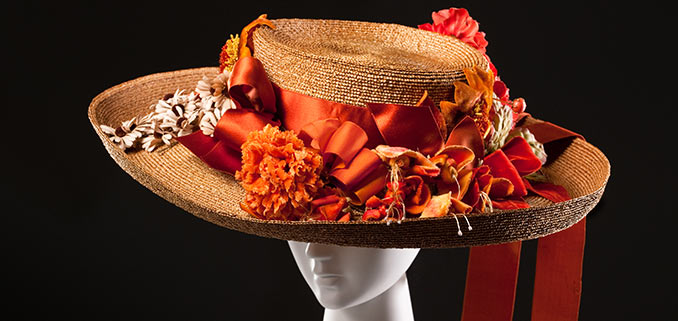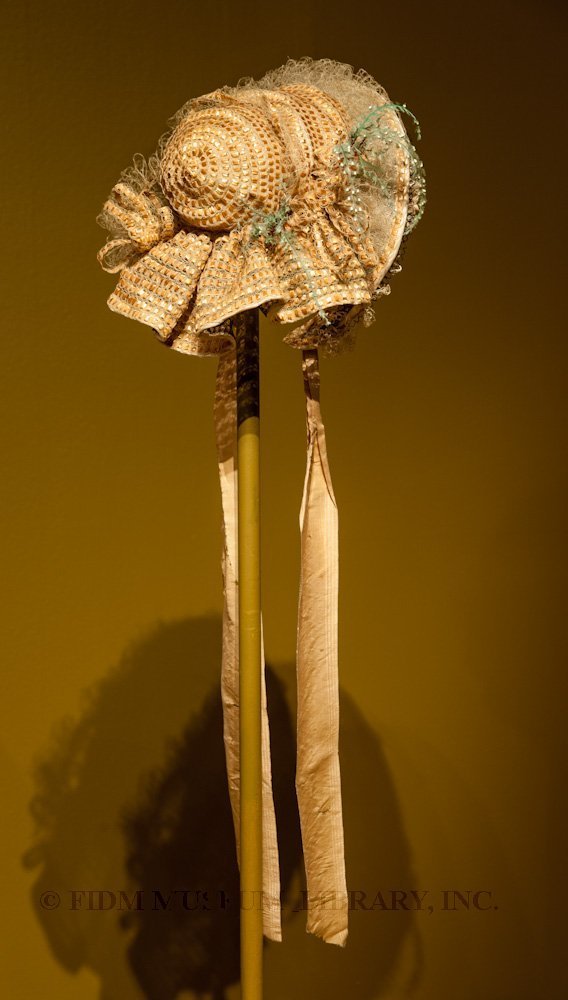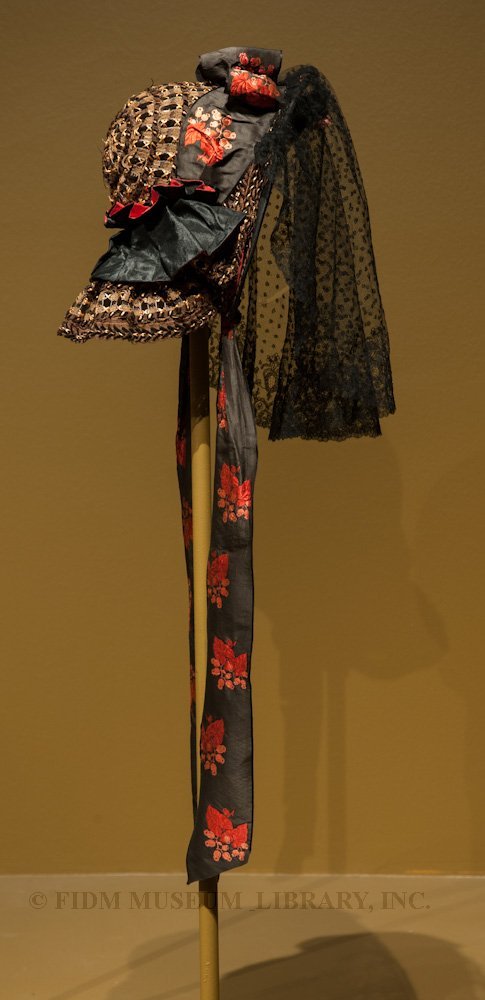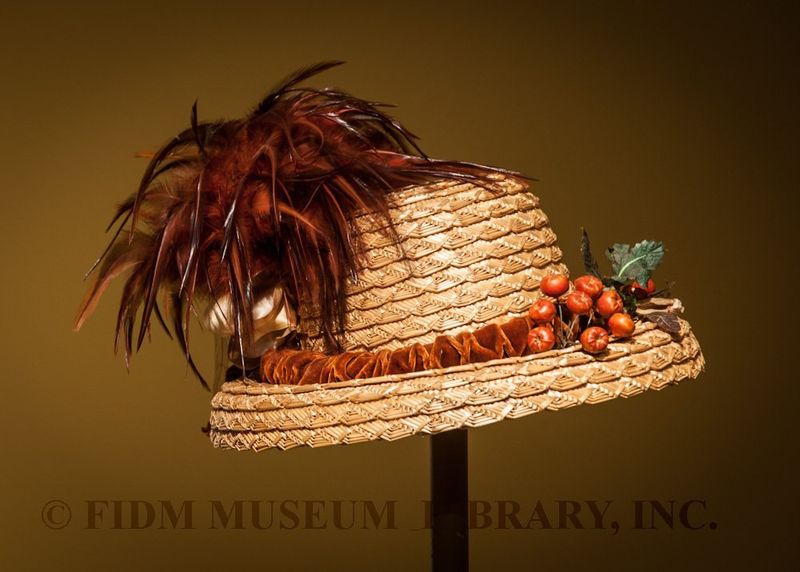Just in time for Easter bonnet inspiration, the FIDM Museum's Orange County Gallery is presenting A Century of Millinery Style: Hats from the Helen Larson Historic Fashion Collection, open through June 17. The installation–a modified version of one displayed at the Los Angeles campus in 2012–offers visitors an overview of fashions in female headgear from the 19th and early 20th centuries.
Hat, Europe, c. 1910, straw, silk ribbon, silk & cotton floral trimming
During that period of history, a woman was not fully dressed without a hat. More than a modest head covering or a defense against the elements, a hat was a public declaration of taste, wealth, and individuality. Most hats of the time were custom made, trimmed by a professional milliner or perhaps the wearer herself. The shape might change according to fashion, but the amount of ornamentation and whimsy was limited only by the milliner's imagination–and the customer's budget.
Bonnet, Europe, c. 1863, straw and horsehair
At a time when women of fashion wore hats every day (along with gloves and corsets), the concept of the Easter bonnet was a vestige of the centuries-old tradition of wearing new clothes on Easter. New clothes symbolized renewal; on a more practical level, they welcomed warmer weather, and advertised one's wealth and fashionability. The annual Easter parade on New York's Fifth Avenue began in the 1870s and continued into the mid-20th century; other American cities developed their own versions of this lavish tradition.
Bonnet, Europe, c. 1860, straw with black and pink trim
In the late 19th and early 20th centuries, clothing was much more expensive than it is today. Buying a new hat was an easy and relatively inexpensive way to update an outfit, especially during the Depression. World War II thrust many women into new roles as factory workers, farmhands, nurses, and servicewomen; "Rosie the Riveter"-style kerchiefs and mannish military hats replaced elaborate millinery. While hats hung on through the war and made a resurgence in the 1950s, they were considered hopelessly old-fashioned by the mid-1960s. Despite the best efforts of the British royal family, elaborate hats are primarily seen in museums today.
Hat, Europe, c. 1877, straw with burnt orange trim
FIDM Museum's Orange County Gallery is located at 17590 Gillette Avenue in Irvine. It is open by appointment only; please contact Jim Nemmert at 949-851-6200 ext. 1730 to schedule a visit, or stop by on April 25th, when the gallery will be open from 11-1 as part of FIDM's annual Open House. Please note that both the Los Angeles and Orange County campuses will be closed April 3-6 for the holiday weekend.





